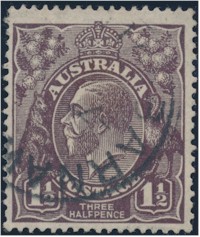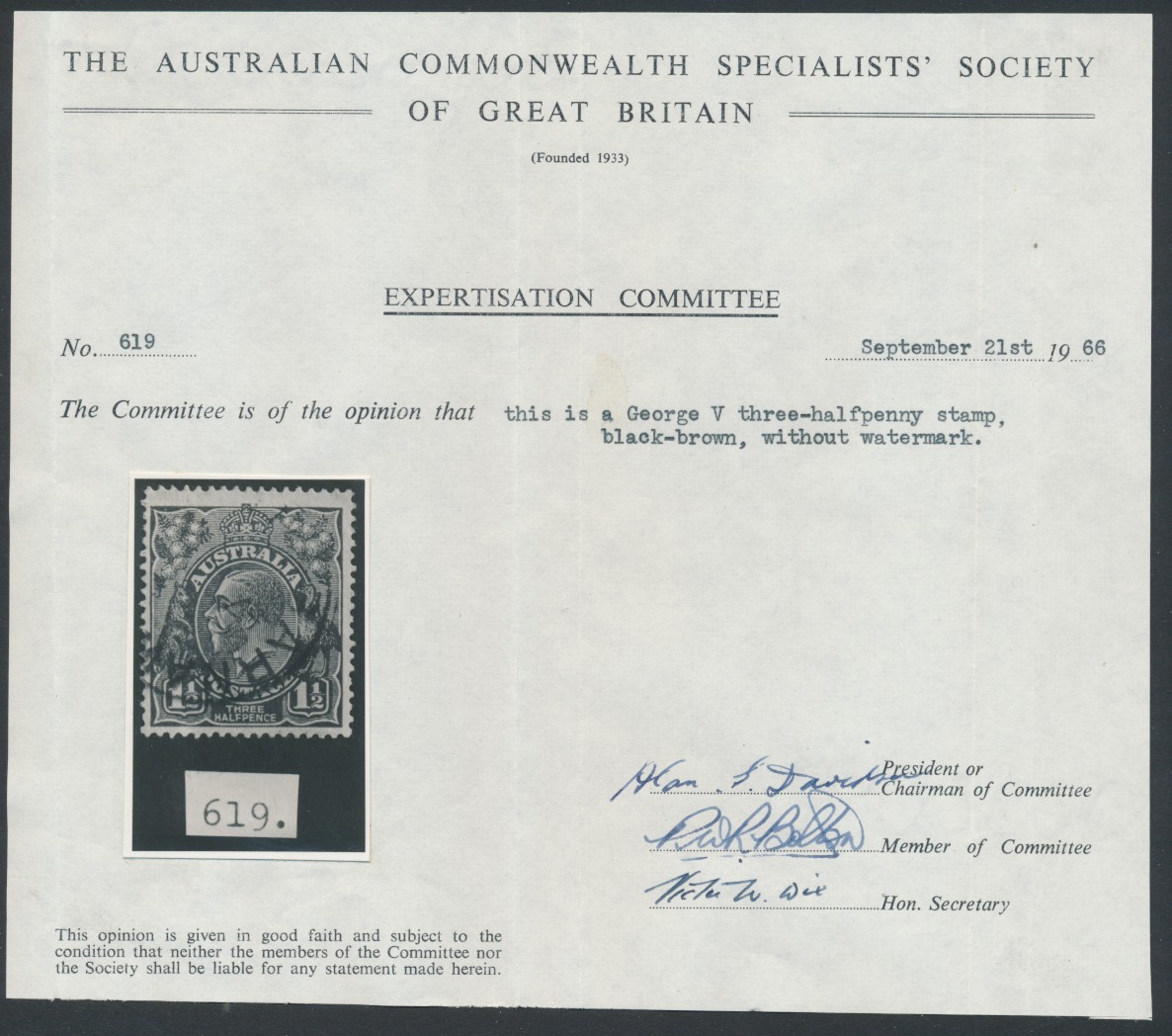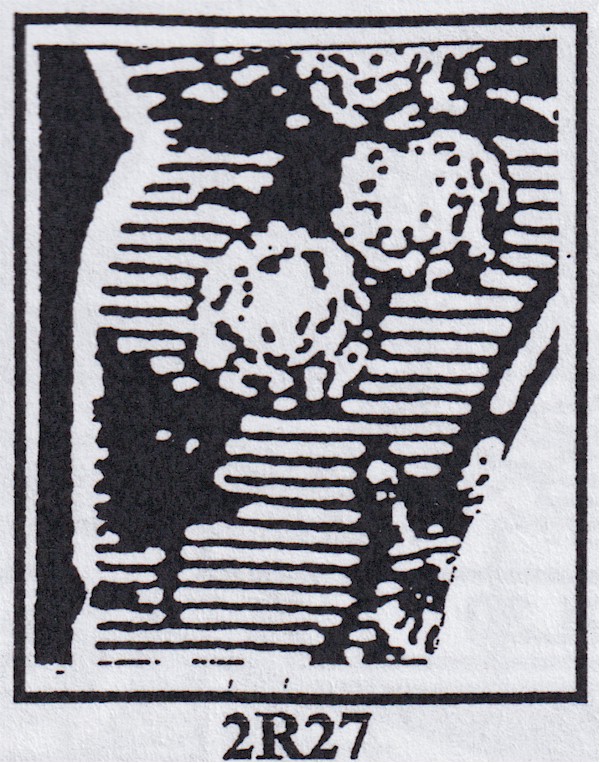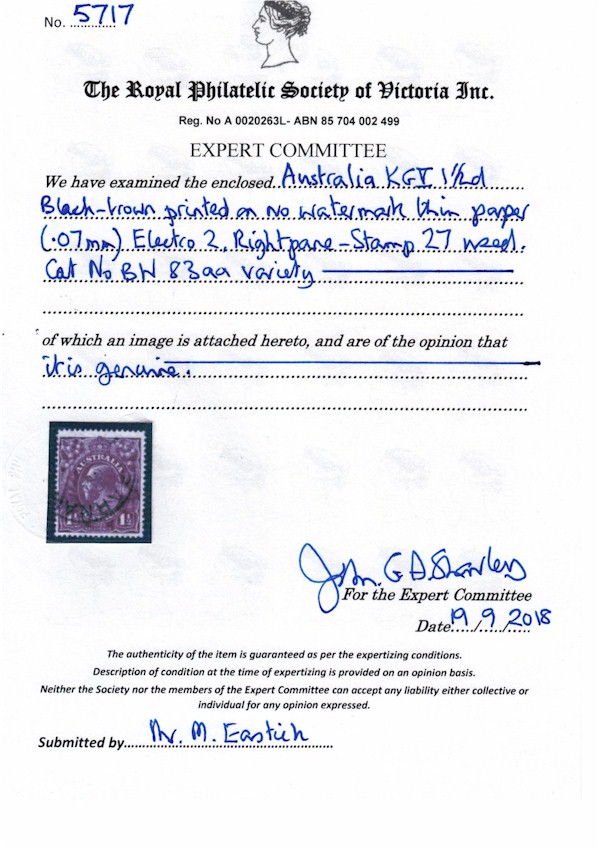|
Something old is new again.
One hundred years ago printings of Single Watermark and Large Multiple Watermark of the 1½d Black- Brown King George V Die 1 Sideface series stamps, were made from 4 electros of 120 stamps, each divided into two panes of 60 stamps, 6 across and 10 down.
The printings used two electros at a time in an upper and lower sheet configuration that were subsequently guillotined down to the sheets of 120 that were issued to post offices. These printings were all carried out by T.S.Harrison.
The 1½d Black-Brown Die I stamp with Single Watermark was issued 9 November 1918 with comb perforation 14.25 x 14.
Then in Jan 1919 a printing was made with Large Multiple Watermark paper also with comb perforation 14.25 x 14. It is believed subsequent printings in this colour occurred on either paper, as was at hand at the time.
The 1½d value was introduced to cover the war tax of ½d introduced in 1918. It was used for letter rate, commercial papers rate & Postcard rate within Australia & the British Empire, Postcard rate to foreign countries and newspaper & magazine rate overseas.
The Brown shades followed this printing from 1919 – 1922. The colour change was made due to the difficulty of sighting black postmarks on the Black-Brown stamps. There were also issues reported where the watermark areas fail to absorb the ink evenly. This is one of the hazards that sometimes makes plating these issues a difficult task.
Later printings appeared in Green and then Red.
The Single Watermark paper is different from the other watermarked papers of the King George V series in that the watermark design is restricted to the printed area of the stamps So that if correctly centred when printing a single Crown over A watermark appears on each stamp. Around the pane of 60 Crown over A watermarks is a single watermark line, very close to what would be the actual outside edges of the stamps.
Further to this the top sections of the paper (printed by the upper electro) has a watermark of the word POSTAGE running up the left hand side of the sheet and the words COMMONWEALTH OF AUSTRALIA running down the right hand side, both of these are outside the line watermark surrounding the panes. The lower portion of the sheet of paper had these words reversed in position, COMMONWEALTH OF AUSTRALIA running up at the left and POSTAGE running down at the right.
Even an off-centre stamp will show a considerable portion of watermark. All other watermarked paper for the King George V series shows the watermark (Large Multiple Crown over A, Small Multiple and C of A) running to edges of the paper and no enclosing line or text.
There was a small printing done on No Watermark paper in 1924 but in this case the 1½d value was in Red.
With the above information in mind I was surprised in a recent visit to my local stamp dealer Michael Eastick and Associates to find that Michael had recently obtained a previously unrecorded (in the ACSC or various handbooks) example of a used 1½d Black-Brown KGV Die 1 printed on UNWATERMARKED paper, and included as confirmation a certificate from the Expertisation Committee of The Australian Commonwealth Specialists’ Society of Great Britain, signed by none other than three noted philatelists Alan.S.Davidson, P.W.R Bolton and Victor.W.Dix dated 21 September 1966.


I made comment to Michael that with current knowledge it may be possible to plate this stamp and I was immediately able to undertake this task using a copy of a KGV handbook that Michael stocks, Bill Fiora’s Flaw Location Guide (2nd Edition) 2013.
And there it was, a flaw, in section LEFT WATTLES 2. The stamp is clearly able to be plated as: ELECTRO 2 Right Pane – stamp 27.

The coloured flaw is on the left wattles one line up from the base of the stem in the shading lines. It also has just to the left a bulging to the right of the left frame, also as illustrated.
Both Michael and I then looked at each other for a moment, both coming to the same inevitable conclusion, this stamp was located in the centre of a pane, nowhere near where a normal No Watermark error is known to occur.
This stamp is clearly not a normal type of “No watermark” error found in other Single Crown over A issues. In those cases, it is easy to show that they occur when a sheet of paper is either misprinted or mis-guillotined from the surviving pieces on the market, where they can be shown to have occurred when the paper was either up or down or even sideways from a normal position.
Many of these items have either a watermark line from around the area to be printed
It must be assumed that this cannot be from a normal sheet of the Large Multiple Watermark printing as those have the watermark covering all of the sheet including the margins. It must be from a full sheet of No Watermark paper mixed in with either of the two types of paper used for this issue – or – from a sheet where a portion of the watermark was not pressed into the paper during production, something no one has heard of before.
Shading of the first two issues in both watermarks are identical so there is no help from this aspect. Those who intensely study these issues may venture an opinion that there are slightly (very minor) differences in appearance.
It should also be noted that the stamp shows none of the characteristics of the No watermark paper used for 1d Green or 1½ Red printings of 1924. The paper for these has a very distinctive mesh and appearance.
To add further to the description of this stamp there are two further comments: I was unable to date the stamp as the hand placed circular date stamp shows only a “7” and the letters BARNAW……. The assumption I have made is that the stamp was a Post Office at BARNAWATHA Victoria at an unspecified date.
I am also aware that Bill Fiora has the late Victor Dix’s 1½d KGV Die 1 Collection and on one of the pages has a position where it is believed this stamp was originally placed in this major collection as the stamp has been removed and it has a clear annotation No Watermark.


The big question remaining is after 100 years are there any more in collections yet to be discovered?
References With thanks and comments from Bill Fiora and Michael Eastick
Guy, Richard (Ed.) 2005, The Australian Commonwealth King George V 1&1/2d Die 1 stamp, Part 1: Electros 1 to 14, Australian Commonwealth Collectors Club of NSW
Fiora, Bill, 2013, KGV Three Halfpence Die 1 Flaw Location Guide Electros 1-12 Second Edition December 2013.
Kellow, J (Ed.), 2018, The Australian Commonwealth Specialist's Catalogue: King George V, Section 4, Brusden-White
GRAEME PLAW Jun 2018
|